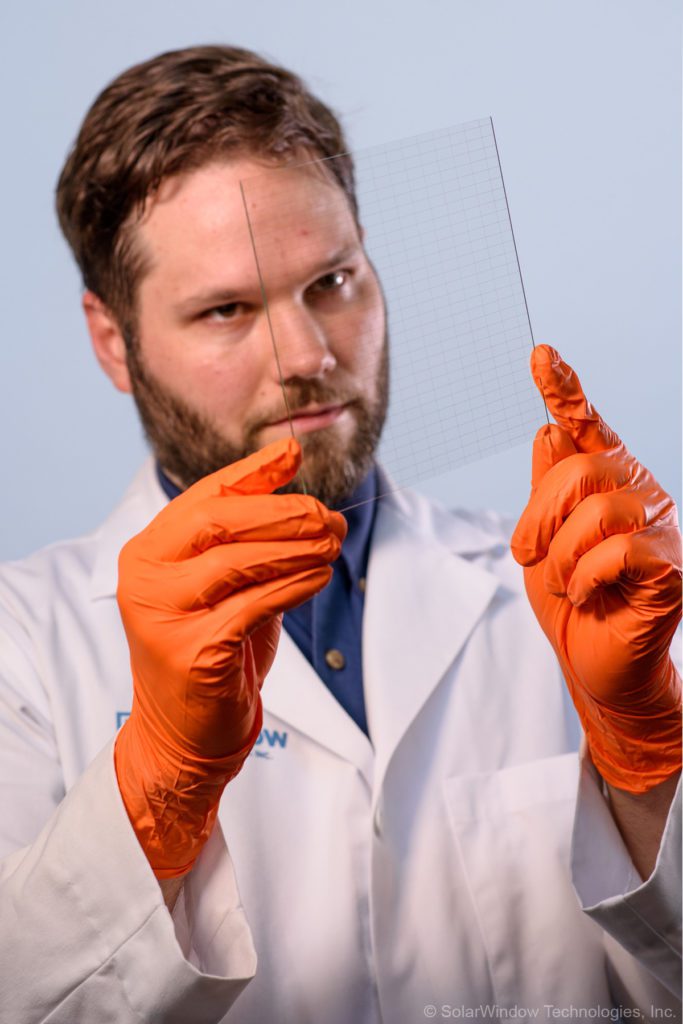Latest SolarWindow process breakthrough revolutionizes the transmission of electricity on glass with wires as thin as human hair.
Columbia, MD – November 3, 2015 – SolarWindow Technologies, Inc. (OTCQB: WNDW), a leading developer of first-of-their-kind transparent electricity-generating coatings for commercial windows on skyscrapers and tall towers, today announced that a process breakthrough has enabled the advanced development of invisible wires as thin as human hair for improved transmission of electricity from the surface of its power-generating glass. According to the company, its early, first generation, invisible wire microgrid was already the thinnest system ever developed for its SolarWindow™ technology.
“Our previous system was widely acknowledged as a technical breakthrough. However, we’ve always wanted to push the boundaries, and have now done so with wires as thin as human hair. Moving forward, our technology team has vowed to attempt even finer wiring grids in order to help them eventually disappear to the human eye,” said John A. Conklin, President and CEO of SolarWindow Technologies, Inc.
Today’s invisible microgrid wires are thinner than an average human hair. When applied in a grid pattern, the new, virtually invisible wire system increases power and performance while improving the visual aesthetics of SolarWindow™ systems, currently under development.
The process developed for these new virtually invisible wires is solution processable, faster, and can be applied using high speed roll-to-roll (R2R) or large area sheet-to-sheet (S2S) equipment, all compatible with the company’s SolarWindow™ module production and deployment strategy.
Despite the extremely fine wiring microgrid, SolarWindow™ glass coatings will continue to serve as a deterrent to bird collisions, an ongoing environmental concern for glass manufacturers and window producers. According to the American Bird Conservancy, up to a billion birds die in collisions with glass each year in the United States. In response, cities are increasingly adopting building codes to address the issue.
“We’re grateful for the support of the development team at the U.S. Department of Energy’s National Renewable Energy Laboratory (NREL),” said Dr. Scott Hammond, Principal Scientist, SolarWindow Technologies, Inc. “Specifically; our work in collaboration with Dr. Maikel van Hest, Senior Scientist, and Talysa Stockert, Research Associate, at NREL, has led to today’s technology advancement.”
NREL is among the world’s most respected and advanced solar-photovoltaic research institutions, and over its 38-year history has been credited for ground-floor support of many of the commercial technologies employed by today’s renewable energy industries. NREL and SolarWindow have been working through a Cooperative Research and Development Agreement to advance the company’s SolarWindow™ technology for generating electricity on glass windows.
SolarWindow™ modules are designed as transparent glass windows for installation on tall towers and skyscrapers. SolarWindow™ modeling shows that modules achieve the industry’s fastest published financial payback of less than one year as validated by a team of independent engineers and at the University of North Carolina Charlotte Energy Production and Infrastructure Center (UNCC-EPIC).
Engineers envision installing SolarWindow™ products on all four sides of tall towers, generating electricity using natural, shaded, and even artificial light. Conventional solar does not work in shaded areas or perform under artificial light. As a result, SolarWindow™ modules outperform today’s rooftop solar by as much as 50-fold more energy generated when modeled for installation on a 50-story building.
About SolarWindow Technologies, Inc.
Related articles
